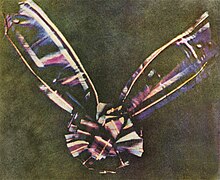The aperture controls the amount of light that reaches a digital camera sensor. An aperture acts much like the pupil of an eye. It opens wider as light decreases to let in more available light. It gets smaller when light increases to reduce the amount of light entering the eye.
The combination of aperture and shutter speed are related, and effect the exposure value. The faster the shutter speed, the larger the opening of the lens and visa versa.
F-stops
 The diameter of an aperture is measured in f-stops. A lower f-stop number opens the aperture and admits more light onto the camera sensor. Higher f-stop numbers make the camera’s aperture smaller so less light hits the sensor.
The diameter of an aperture is measured in f-stops. A lower f-stop number opens the aperture and admits more light onto the camera sensor. Higher f-stop numbers make the camera’s aperture smaller so less light hits the sensor.When an aperture is opened up by one f- stop, the amount of light which reaches the sensor is doubled. F-stops are expressed in three different ways: f/8, f-8, and 1:8.
Aperture settings can be used creatively to control depth of field, how much of a photo is sharp in front and back of where you focus on the main subject.





